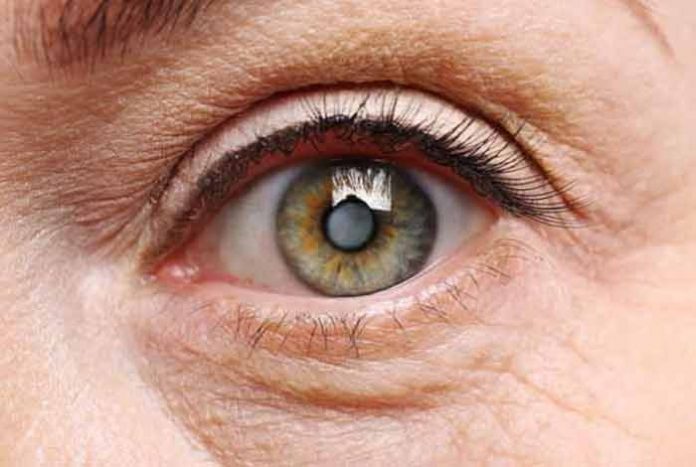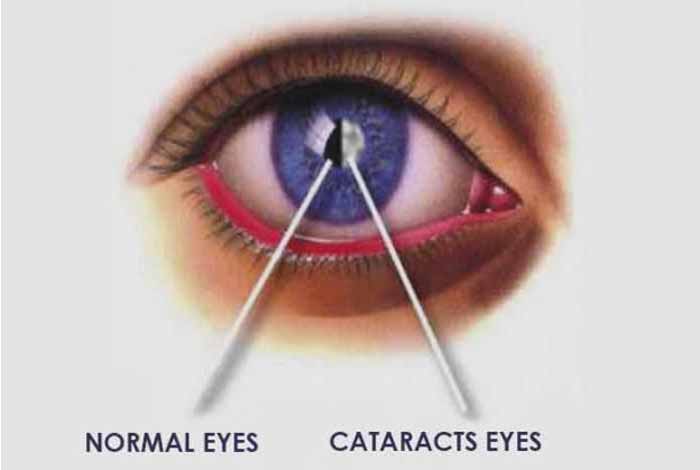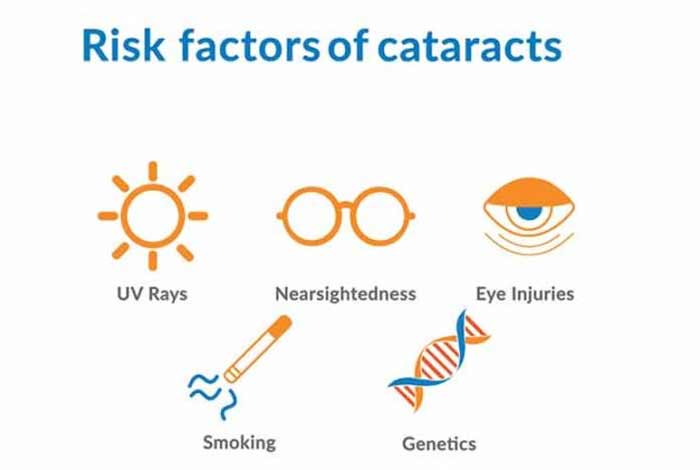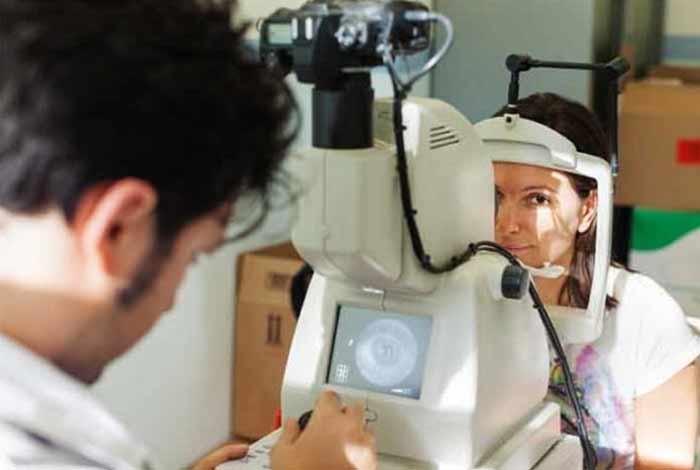
Overview and Facts
Eyes are the windows to the world. They give us the sense of vision, help in processing visual details and enable a number of responses that are dependent on light. The eyes naturally have a lens, which focuses light on the retina and sends the image through optic neurons to the brain for processing. These windows become blurry due to the development of cataract, in which the lens becomes cloudy and cannot focus the image properly on the retina. This leads to vision changes.
The earliest reference of cataract comes from the 29 AD medical literature – De Medicina, written by Aulus Cornelius Celsus, a Roman encyclopedist thought to be a physician. The first cataract surgery was performed by an Indian physician, named Sushruta.
A cataract develops gradually over time and can affect one or both the eyes. It can vary according to the size and location, and interfere with normal vision. It is common among people aged 55 years and above, but occasionally, it may affect people belonging to younger age group. If cataract develops in both the eyes, it can worsen in one eye over time.
It is estimated that by age 80, more than half of the Americans either develop cataract or have already had a cataract surgery. It affects 1 in 6 Americans over the age of 40. According to World Health Organization (WHO), approximately 51% of blindness in the world is caused by cataract. Surgery is the only method to treat cataract. It is estimated that 9 out of 10 patients undergoing cataract surgery regain 20/20 to 20/40 vision. Cataract surgery is one of the safest surgeries in the U.S.

Types and Symptoms of Cataract
Types of Cataract:
Cataract can be classified in different ways.
1. Types of Cataract According to Cause
Cataract can be classified into following ways depending on the cause of cataract:
- Age-Related Cataract: It is the most common form of cataract. It progresses slowly and does not affect the vision in its early stages. As the disease progresses, the vision begins to blur. With age, the protein fibers in the lens break down and clump together, eventually blocking the light that enters into the eye. This causes the vision to become duller and cloudier. Gradually, it becomes difficult to read and distinguish between dark colors.
- Traumatic Cataracts: It occurs due to a blunt force injury, damaging the eye lens. It can also occur from a penetrating injury in which the eye lens is pierced by a sharp object. A traumatic cataract can develop immediately after the injury or can take months or years to develop.
- Radiation Cataract: Prolonged exposure to ultraviolet light is one of the causes of cataract. People, who work outside in the sun, such as fishermen and farmers are at a higher risk of developing cataract. Sunglasses that completely block both UVA and UVB should be worn to decrease the risk of developing cataract.
- Congenital Cataract: In some cases, neonates contract cataract from birth. It occurs in babies, whose mothers have German measles. A cataract from birth can stop the visual system from functioning normally. It can impair the eye from learning to see. Hence, a surgery is required to enable the child’s visual system to develop normally.
- Secondary Cataract: This develops as a result of other medical conditions like diabetes. It can occur after glaucoma surgery or eye infections, such as uveitis and retinitis. Long-term use of oral steroids like prednisone also increases a person’s chances of developing cataract.
2. Types of Cataract According to Location in the Eye
- Nuclear Cataract: It is the most common type of age-related cataract. It occurs in the center of the lens, and causes the nucleus of the lens to become yellow or brown. Patients suffering from this type of cataract have trouble seeing at long distance and in identifying dark colors.
- Cortical Cataract: It develops as wedge-shaped spokes at the outer edge of the cortex of lens that gradually progresses towards the center of the lens. In this type of cataract, the patient has problems seeing in glare and contrast. It generally develops in diabetics. It affects near as well as distant vision.
- Subcapsular Cataract: It develops under the capsule, on the surface of the lens. People, who use corticosteroids in their eyes regularly, or have experienced eye injury, extreme near sightedness, retinitis pigmentosa or diabetes, develop this type of cataract. A patient of subcapsular cataract has trouble seeing in bright light. It causes glare or halos around the light at night.

Symptoms of Cataract:
Common signs and symptoms of cataract include:
- Clouded, blurred or dim vision
- Troubled night vision
- Sensitivity to light and glare
- Seeing halos around light
- Frequent change in eyeglass or prescription of contact lens
- Fading of colors
- Difficulty in distinguishing between dark colors
- Double vision

Risk Factors of Cataract
Following are the risk factors associated with cataract:
- Aging
- Overexposure to UV radiation
- Diabetes
- Long-term use of steroids
- Excessive exposure to X-rays or radiation treatment to head
- Genetic predisposition
- Vitrectomy, i.e., removal of vitreous humor from the eye
- Injury to eyes
- Congenital
- Excessive diarrhea
- Glaucoma
- Cigarette smoking
- Hypertension

Do I Have Cataract?
If you observe that your vision is gradually becoming blurry, and you can see halos around bright light, you might have cataract. Other symptoms to look out for are trouble seeing at night or difficulty reading or problems seeing in glare. Also, if your glasses are getting changed more frequently than before, then you should ask your ophthalmologist to check for cataract.
However, blurry vision might also be due to the development of nearsightedness, farsightedness, astigmatism or serious conditions, such as stroke, preeclampsia in pregnant women, migraine, multiple sclerosis and even brain tumor. Hence, you should not ignore your symptoms and see an ophthalmologist as early as possible.

Causes and Prevention of Cataract
Causes of Cataract:
Most cataracts are caused by age-related changes in the eye lens, which makes it cloudy or opaque. Other factors that contribute to the development of cataract are as follows:
- Diabetes Mellitus: People suffering from diabetes are at a higher risk of developing cataract.
- Drugs: Prolonged intake of corticosteroids, chlorpromazine and other phenothiazine-related medications increase a person’s risk of developing cataract.
- Excessive Ultraviolet Radiation Exposure: Increased unprotected exposure to ultraviolet escalates the chances of developing cataract.
- Smoking: Smoking, in some way, increases the development of cloudiness in the eye lens, causing cataract.
- Alcohol: It is found that people, who consume large quantities of alcohol, are at a high risk of developing cataract as compared to non-alcoholics.
- Nutritional Deficiency: Some studies indicate that low levels of antioxidants in the body leads to the formation of cataract.
- Inheritance at Birth: Some infants develop cataract shortly after birth due to infections, such as rubella in the mother during pregnancy.
- Eye Injury: Cataract might develop as a secondary reaction to eye injury or surgery for other eye conditions like glaucoma.

Prevention of Cataract:
There are no clinically proven methods to prevent the development of cataract. However, some simple precautions that can be taken to keep eye lens healthy are:
- Decreasing unprotected exposure to ultraviolet rays or other radiations
- Smoking cessation
- Increasing antioxidants consumption in diet
- Undergoing regular eye check ups
- Managing diabetes
- Healthy diet
- Use of sunglasses
- Reducing alcohol content

Diagnosis and Tests of Cataract
Following tests are performed to diagnose cataract:
- Visual Acuity Test: In this test, a person’s ability to read from a distance is tested. The person is made to read a list of letters from a distance. This helps in determining how much the cataract is affecting distance and near vision.
- Slit Lamp Examination: In this, a microscope is used to inspect the cornea iris, lens, and the space between the iris and cornea.
- Tonometry: In this test, the pressure inside the eye is measured.
- Retinal Examination: In this, a thorough examination of retina is carried out after dilating the pupils using an eye drop. With this test, the lens is examined to determine how dense is the clouding.
- Sensitivity to Glare: A patient’s sensitivity to glare and bright lights is examined in this test.
- Color Perception Test: Through this test, the ability of a person to perceive colors is analyzed. People with cataract have trouble distinguishing among dark colors.
- Refraction: This test is done to determine if there is any need for change in eyeglass or contact lens prescription.

Treatment and Care of Cataract
The early symptoms of cataract can be managed by using new eye glasses, better lighting, anti-glare sunglasses or magnifying glass. When these methods become ineffective, surgery is the only option left. Through surgery, the cloudy lens is removed and is replaced with an artificial lens. It is recommended only when the disease begins to interfere with day-to-day activities. Cataract surgery has emerged as one of the safest surgeries, and the patient can go home the same day.
Sometimes, cataract surgery is recommended even when it does not pose any serious vision problems. This happens when cataract hinders examination or treatment of other eye-related problems, such as age-related macular degeneration or diabetic retinopathy.
If a patient has cataract in both the eyes, then only one is operated in a day and the other is operated later; generally, after 4 weeks.

OTC Medications and Self-Management Methods for Cataract
Over-the-Counter Medications for Cataract:
There are limited OTC medicines that can be beneficial for people suffering from cataract. There are eye drops containing N-acetyl carnosine that help widen the pupil. They increase the amount of light entering into the eyes and help in preventing vision loss in children, who are waiting for surgery. However, these drugs are not approved by FDA.
Self-Management Methods for Cataract:
For self-managing cataract, below-given methods can be followed:
- The patients can use a soft background light along with light on the table.
- Patients with cataract should avoid glare on TV and computer screen by using anti-glare screen.
- People above the age of 45 years should keep their eyeglass or contact lens prescriptions up to date.
- Low vision aids and adaptive technologies like video enlargement systems or speech software for computer systems should be used by cataract patients.
- Making small lifestyle changes, such as cessation of smoking and protecting eyes from over exposure of UV radiation can help in slowing down the development of cataract.

Natural Ways to Cure Cataract
There are no natural ways to completely treat cataract. However, following methods can be used to manage the disease:
- Cineraria maritima or dusty miller is an herb, whose juice is known to alleviate cataract symptoms.
- Saffron is known to show vision improvements in patients.
- Increased consumption of carrots and spinach has shown great potential for improving vision in cataract patients.
- Consumption of two or three cloves of raw garlic helps in clearing crystalline lens of the eye.
- Milk and almonds help reduce irritation and redness due to cataract.
- Wheatgrass is known to correct vision problems.
- Papain, obtained from papayas, helps digest protein in the body, and can be used to manage the symptoms of cataract.
- Increased intake of vitamin C can help prevent the development of cataract.

Health Tip by Expert
Cataract is a condition, which can be debilitating in its advanced stages. However, it can be effectively managed with surgery. Since it is an age-related condition, it is seemingly unavoidable, but with proper precautions and eye care, its course can be delayed or even prevented. Cataract surgery is one of the most successful surgeries and can be a real boon for patients having advanced stages of this disease.




